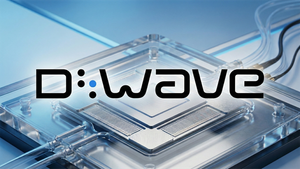
Nvidia Corp.’s (NASDAQ: NVDA) 59% gain since the start of 2024 has propelled the SPDR S&P 500 ETF Trust (NYSEARCA: SPY) and the Invesco QQQ (NASDAQ: QQQ) to new highs.
In particular, Nvidia is pulling other artificial intelligence stocks higher, which is resulting in broad market highs.
An exceptional stock's meteoric rise can supercharge broader market momentum. That can bolster investor confidence, but eventually, the euphoria dies down.
Now, does that mean a crash is imminent? Probably not.
But no stock just keeps rising without taking a breather at some point, which is something investors should remember, even as markets rip higher.
Does trading volume indicate slower pace of buying?
Led by Nvidia, following the company’s most recent earnings report, the S&P 500 rallied 2.07% on February 22, to a new high. Trading volume was slightly below average, although part of that could be due to a shortened holiday week.
If you look back a few years on the SPY ETF chart, you can see the S&P notched some huge price gains, on a percentage basis, in March 2000, just before the index rolled over. At the time, tech euphoria was also driving stocks to new highs.
If you look at MarketBeat’s Nvidia chart, you’ll see that trading volume in the stock was higher than normal on February 22, but not its all-time high.
Again, that could simply be an effect of a short week on Wall Street, but it could also indicate that some fatigue is setting in, despite continued optimism about Nvidia’s artificial intelligence capabilities.
Nvidia institutional ownership data tells the story of how the stock has rallied to these highs: In the past 12 months, 2,987 institutional buyers accounted for $659.91 billion in inflows, versus 2,326 institutional sellers accounting for $46.78 billion in outflows.
Pullbacks not unusual after big rallies
Much of that selling came in September and October of last year, when the broader market was also selling off as investors realized the Federal Reserve would keep rates higher for longer.
But that 2023 broad market pullback, before the rally resumed in late October, wasn’t that unusual, after the S&P 500 had risen 28% in a year. That’s about the level where investors begin taking some profits.
A January article from U.S. Bank Wealth Management, “Is another market correction coming?” cautioned about the continued lack of breadth, even as the market is in a rally driven by technology stocks.
On a one-month basis, all 11 S&P sectors are trading higher, but U.S. Bank noted that the same risks the market faced in 2023 remain, including inflation, interest rates, geopolitical developments and the potential of a tech bubble.
Analysts see smaller upside in Nvidia stock
MarketBeat’s Nvidia analyst forecasts don’t show the “screaming buy” you might be expecting; instead, the consensus view is “moderate buy,” with a price target of $820.03, an upside of just 2.67%,
That indicates an expectation for a slower pace of growth in the next 12 to 18 months, with a pullback almost certainly priced in.
Nvidia stock is in extended territory, trading about 34% above its 50-day line. That’s exactly the kind of chart action that frequently results in a pullback, which in turn, may present a new buy opportunity.
Sandeep Rao, a senior researcher at Leverage Shares, an asset manager specializing in leveraged and inverse ETFs, said in an email that there are a few reasons investors should be cautious about Nvidia right now.
Nvidia is part of a cyclical industry
“While recent earnings were exceptional, deeper analysis reveals a lack of sustained growth trends across key metrics,” Rao said. “The company's success hinges on a specific consumer mix that may not last.”
Semiconductor stocks are notoriously cyclical; Nvidia itself has gone through those cycles in the past. Investors are kidding themselves if they think “This time it’s different,” and customers won’t slash spending, or spending won’t plateau for a time, even as AI is undeniably a long-term growth area.
Rao also cited premium pricing for Nvidia, including its price-to-earnings ratio of 61, which is frothy, to say the least, and will undoubtedly give some investors pause.
Echoes of the Nifty Fifty
Increased costs for the company could also put a dent in earnings, Rao added. Unlike fully integrated chipmakers, he said, Nvidia relies on Taiwan Semiconductor Manufacturing (NYSE: TSM) for manufacturing, reducing its control over costs and future innovations.
Finally, Rao cites echoes of the past as a reason for caution. Comparisons to the "Nifty Fifty" stocks of the 1970s “suggest a potential bubble and eventual correction in high-flying tech stocks like Nvidia.





